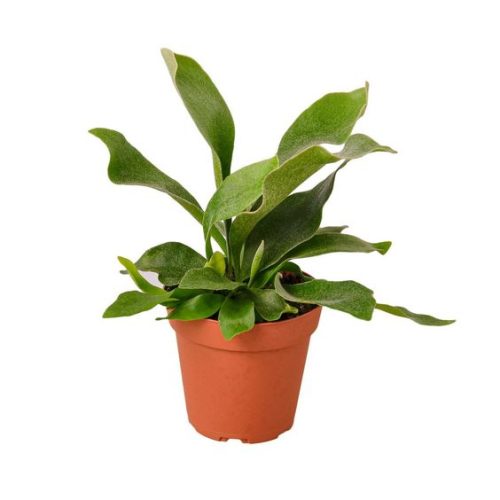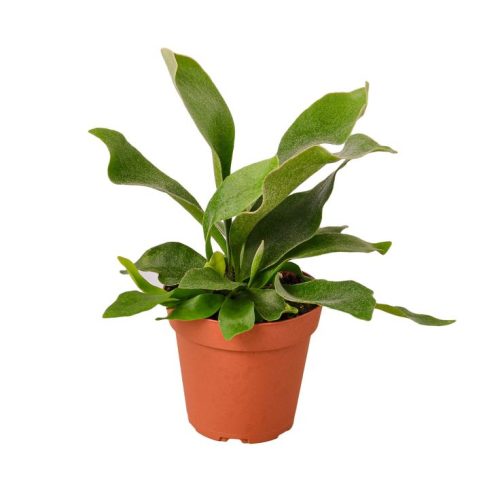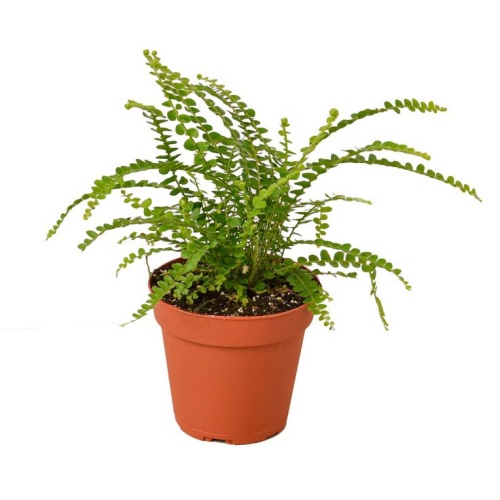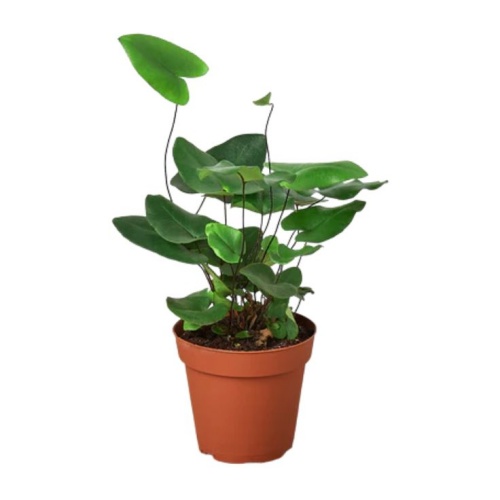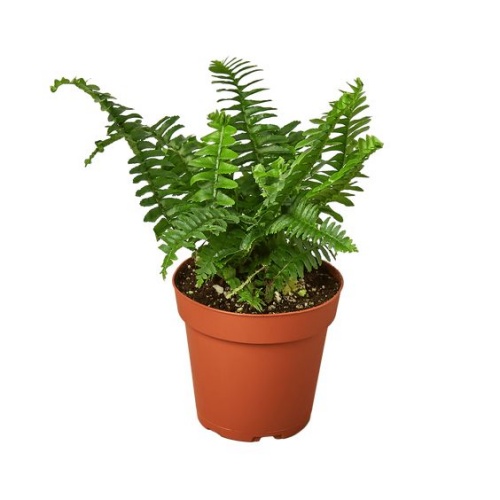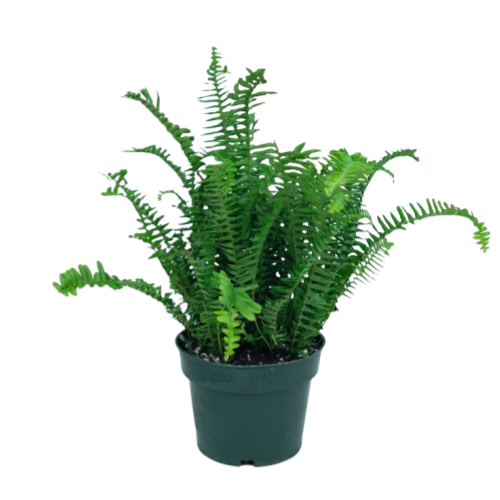Bird’s Nest Fern
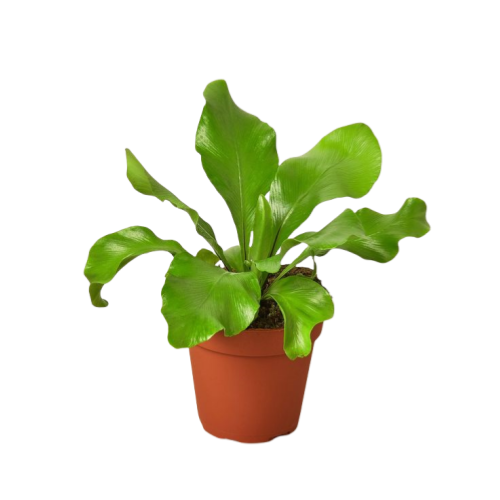
- Botanical Name: Asplenium Nidus
- Family Name: Aspenaceae
- Batang:
- Suhu:
- OThers:
Ihtisar
Panjelasan Produk
Fern-tastic Features and Fabulous Functions: The Bird’s Nest Fern’s Tropical Tale
The Bird’s Nest Fern’s Origins and Grace
Gem tina hutan hujan tropis
The Bird’s Nest Fern, scientifically known as Asplenium nidus and a member of the Aspleniaceae family, is native to tropical regions of Asia, Eastern Australia, and Polynesia. This plant typically grows on trees in its natural habitat, especially in tropical rainforests, where it clings to the curvatures of trunks or branches, showcasing a beautiful scene of harmonious coexistence with nature.
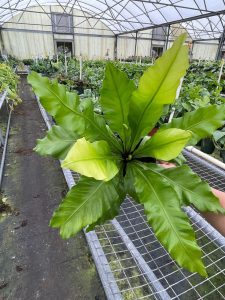
Bird’s Nest Fern
Rosettes sareng fronds
Na Bird’s Nest Fern is renowned for its distinctive growth pattern, forming a prominent rosette with broad, lance-shaped, shiny, and bright green fronds adorned with contrasting dark midribs and wavy edges. The eye-catching leaf clusters exhibit a vase-like growth habit, creating a unique effect similar to a shuttlecock, with the central part resembling a bird’s nest.
Daun anyar terus muncul ti wewengkon tengah, sayang, gancang pepelakan kalayan kaluhan. Panas asak tiasa ngahontal 4-5 suku di kamekaran luar tapi langkung sedeng nalika dikejat di wadah jero ruangan, biasana 1-2 suku. Kasus Span perenahna di bagian handap fronds, radiati ti midrrib nuju ka wates daun, nambahan unsur sareng misikasikeun.
The Essential Care Guide for Bird’s Nest Fern
Maceman perawatan
The Bird’s Nest Fern is a tropical plant, and its growth habits are closely related to tropical climates. This plant prefers moist and warm environments, requiring high humidity to maintain its vibrant green color and shine. When grown indoors, It should be placed away from drafts and heat sources to avoid temperature fluctuations that can stress the plant.
Lampu sedeng
Bird’s Nest Fern do not require direct sunlight; they thrive better under bright, diffused light. Direct sunlight can cause leaf burn, so it’s best to position Bird’s Nest Ferns where they can receive indirect light, such as near east or north-facing windows. Outdoors, they typically grow in the shade of trees, providing the shade they need.
Haneut sareng stabil
It prefer warm and stable temperatures, with an ideal growth range of 18°C to 27°C (65°F to 80°F). They are not cold-tolerant, so they need to be kept above 15°C (59°F) during winter to avoid cold damage. In cooler environments, the growth rate of Bird’s Nest Ferns slows down or may even halt.
Lemes sareng subur
For soil, it need a well-draining and fertile medium. They do not like waterlogged conditions, so the soil should contain a proportion of organic matter, such as leaf mold or peat, to keep it moist while ensuring good drainage. Additionally, regular fertilization can promote healthy growth of Bird’s Nest Ferns, especially during the growing season, when liquid fertilizer can be applied once a month.
The Bird’s Nest Fern’s Aesthetic and Applications
The Unique Charm of Bird’s Nest Fern
The Bird’s Nest Fern (Asplenium nidus) is renowned for its distinctive morphological features, being a perennial epiphyte. Its fronds radiate outward from a central rosette, creating an elegant arc rather than the feathery fronds common to other ferns. The leaves are smooth, lanceolate, and sometimes exhibit a slight ripple when exposed to ample light. Mature Bird’s Nest Ferns can grow up to 3-5 feet tall outdoors, while indoors in containers, they are typically more modest, reaching about 2 feet in height.
Ideal Settings for Bird’s Nest Fern
Kusabab sina tropis sareng penampilan anu raya, aranjeunna sering dianggo pikeun hiasan Tukang, khususna dina Setasi garansi homound mode anu dipikahoyong. Éta kabéh cocog pikeun panempatan di kamar mandi, sabab pérangan ieu anu nyerat dina lingkungan anu haneut, beueus. Salaku tambahan, aranjeunna ngadamel pepelakan kantun, disimpen dina baskét atanapi plumers woven nyeret tropis alami kana salengkep. Kusabab aranjeunna henteu peryogi sinar panonpoé langsung, windows belang atanapi wétan-wétan mangrupikeun lokasi anu cocog. Éta ogé ngawujudkeun salaku pikaresepeun dina titik fokus di kebon jero ruangan, khususna pikaresepeun pikeun pememara melak-obina anu ngalebetkeun panto tropis.





